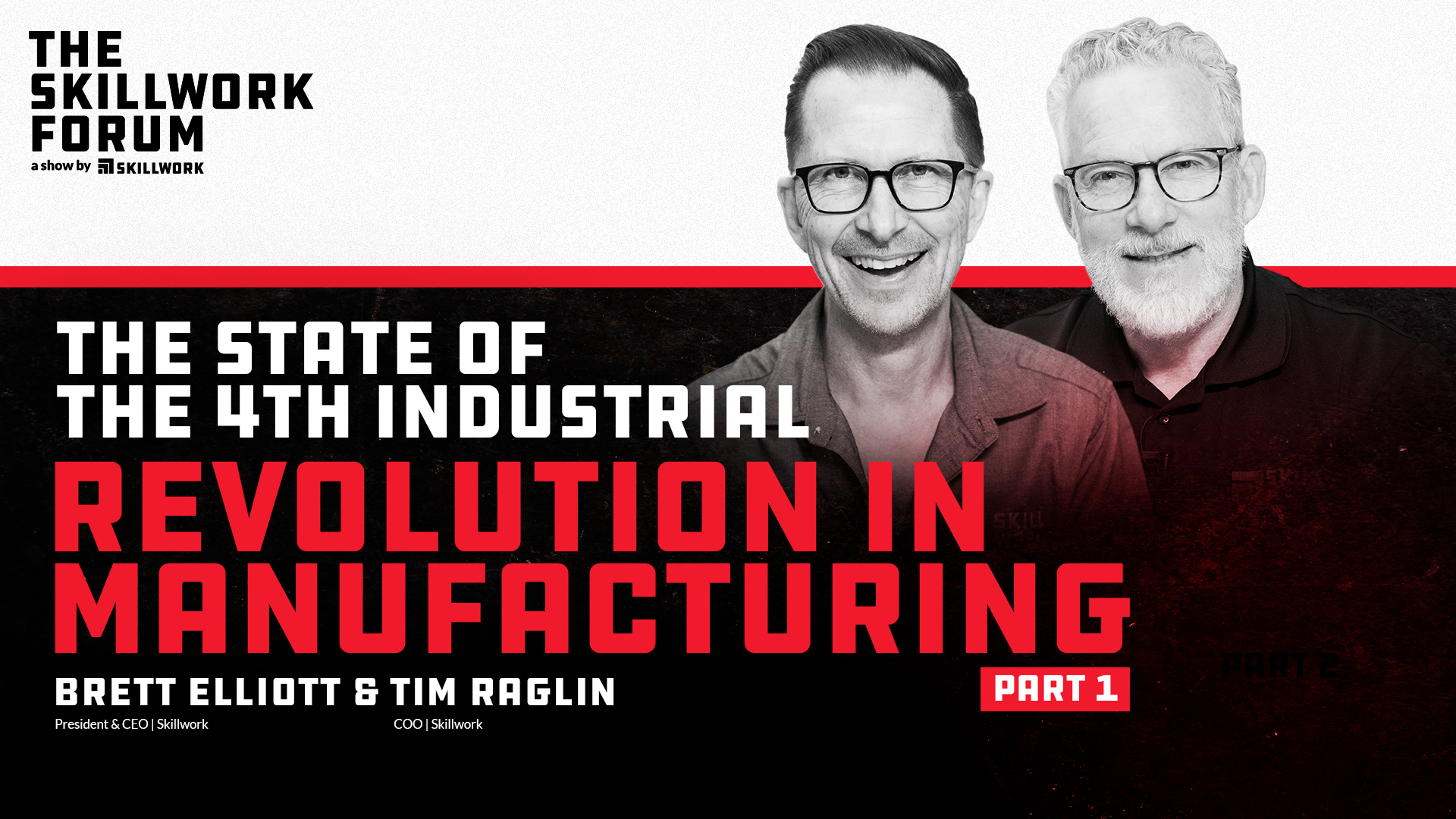Leading Through the Fourth Industrial Revolution
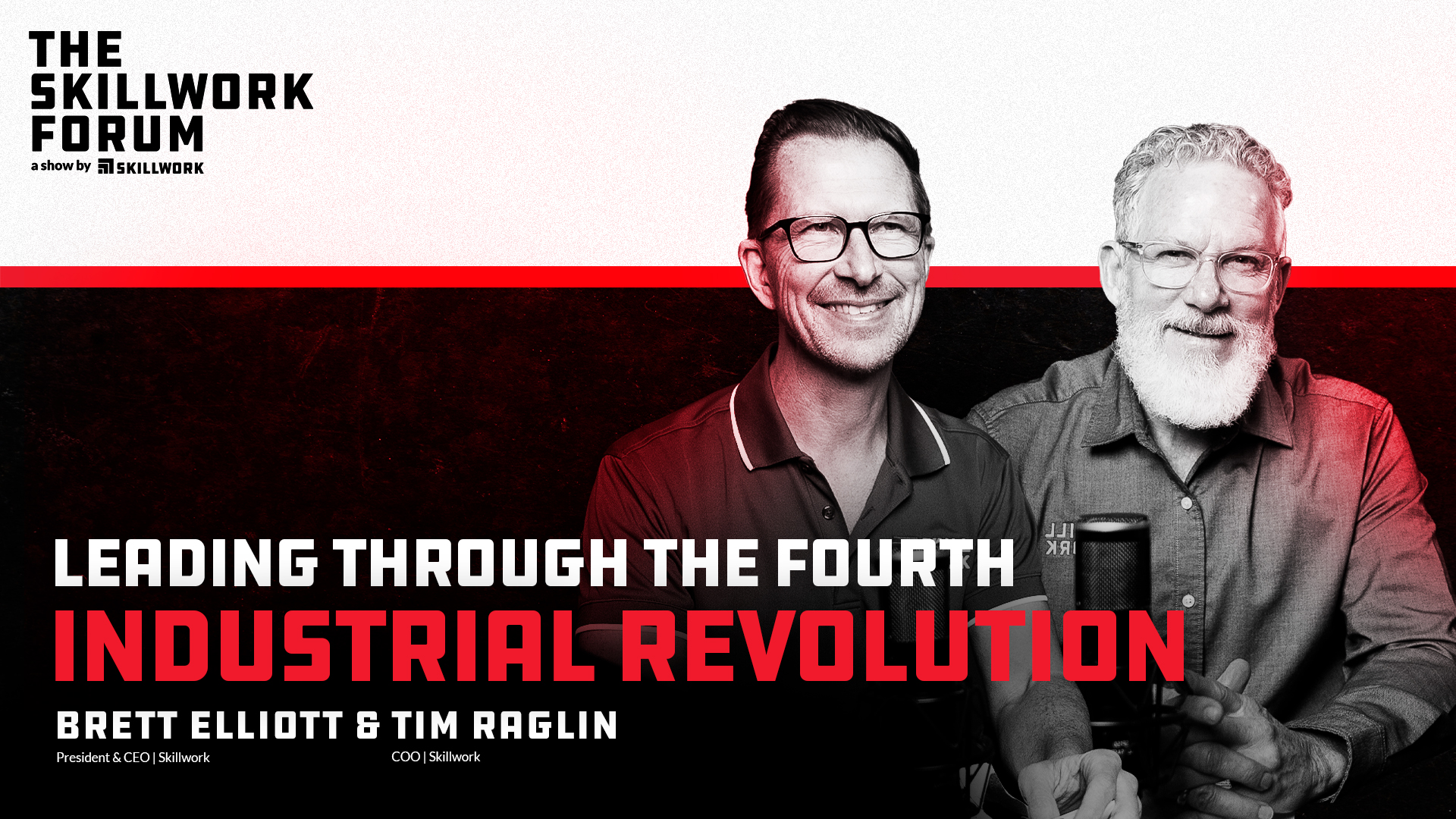
The Fourth Industrial Revolution is here and it’s happening right now, bringing valuable innovations that will transform the manufacturing industry. For business owners in manufacturing who want to get and stay ahead of their competitors, leading through the Fourth Industrial Revolution is a must.
However, this new revolution that can help reduce downtime in production will also come with challenges that need to be addressed. For example, there’s still a huge skilled labor shortage and retiring baby boomers are further exacerbating the issue. Even if you invest in new predictive maintenance manufacturing technologies, you need the skilled workers to keep it up and running—and these workers can be tough to find or retain.
So, what does it look like to lead through this revolution?
How can you reap the benefits of big data analytics in manufacturing and other advances while overcoming some of the hurdles?
That’s what we’re talking about today. As you listen to the podcast below or read through the rest of this article, you’ll gain a deeper understanding of:
- The Fourth Industrial Revolution and its definition
- The main characteristics of the Fourth Industrial Revolution
- How to lead through the revolution
Here’s what you need to know about the Fourth Industrial Revolution.
Fourth Industrial Revolution Definition
In the podcast, Brett (co-founder of Skillwork) provides this as a Fourth Industrial Revolution definition:
“[The Fourth Industrial Revolution is] the concept that manufacturing can benefit from an interconnectedness of all equipment, sensors, procedures, data collection, and IT systems for a total transformation of the way the plant works.”
Basically, the Fourth Industrial Revolution seeks to connect every aspect of a manufacturing plant so that owners, managers, etc. can:
- Make more informed decisions
- Keep processes running more efficiently
- Prevent issues instead of reacting to them
Let’s dive a little further into the advantages and disadvantages of the Fourth Industrial Revolution, like preventive vs. reactive maintenance.
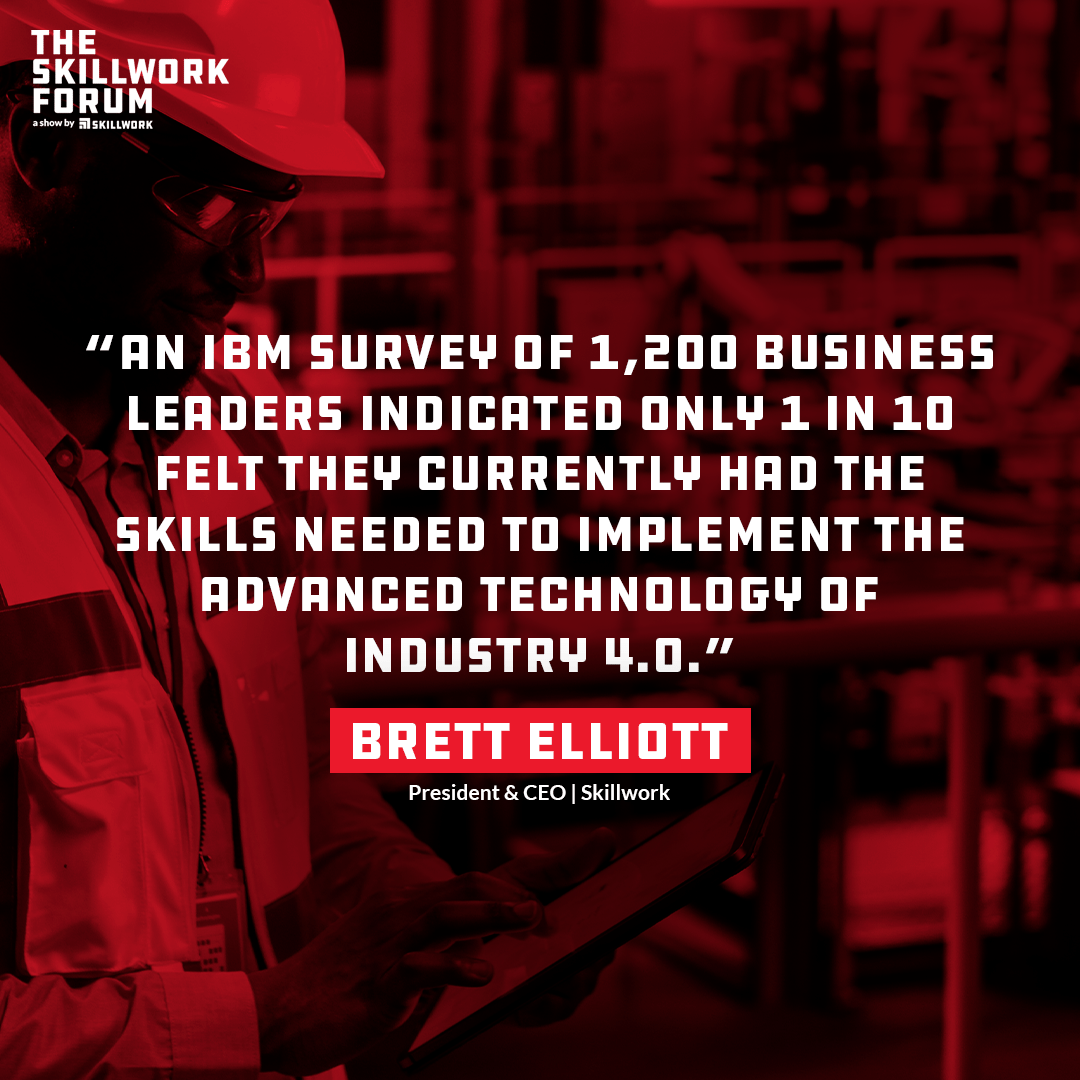
What Are the Advantages and Disadvantages of the Fourth Industrial Revolution?
Like many new advancements, the Fourth Industrial Revolution (or 4 IR as some are calling it) has both pros and cons.
Here’s a quick look at some of the value 4 IR creates and a few of the challenges employers may face as they make the transition.
Advantages
1. Preventive and predictive maintenance in manufacturing
One huge advantage (that we briefly mentioned above) is the shift from reactive to predictive maintenance in manufacturing.
Before 4 IR, plant managers and supervisors would simply wait for a machine or system to break and then quickly deploy workers to fix it—reactive maintenance. Now, an interconnected plant can utilize big data analytics to better predict and prevent failures before they happen, opening the door to preventive maintenance in the manufacturing industry.
This can significantly reduce unplanned downtime in manufacturing and help keep production and revenue high—two important things for any business owner.
2. The circular supply chain model
Advancements in manufacturing technology, systems, and processes also create a greater opportunity for circular supply chain management.
Until recently, the supply chain was linear:
- Resources were harvested
- Plants manufactured products from these resources
- Products were shipped to their destination
- Once the product was used, it was discarded
- The plant continued to create the same products from newly harvested materials
The circular supply chain model changes this linear model. Instead of discarding used products, the circular supply chain encourages the recycling and reuse of materials and products. However, this new process requires more interconnected management of processes from the plant to the consumer and back to the plant.
With the 4 IR innovations, like big data analytics in manufacturing, the circular supply chain model can be more effectively implemented and managed.
Disadvantages
1. Tangible cost
First and foremost, there’s a real, tangible cost to getting new equipment.
All the new technology and interconnected systems, sensors, etc. aren’t cheap, and investing in new automated machines can cost hundreds of millions of dollars. However, this cost is necessary if you want to keep up with your competitors.
So, you need to spend the money to get this new technology.
But once you spend the money and get the new equipment, it’s wise to ensure that you have the human capital to keep it running—which brings us to our next disadvantage.
2. The need for more highly skilled workers
Brett says in the podcast:
“If I'm a business leader, and I get my board to agree that we're going to spend hundreds of millions of dollars on advanced equipment and technology, and then I have to go back to them in six months and say, ‘Well, we're not running any of it or we're not running it very well, because we don't have the people’, I probably should get fired.”
He points out that it’s not simply enough to spend the money to get all the new equipment, you also need the workers who can keep the equipment running.
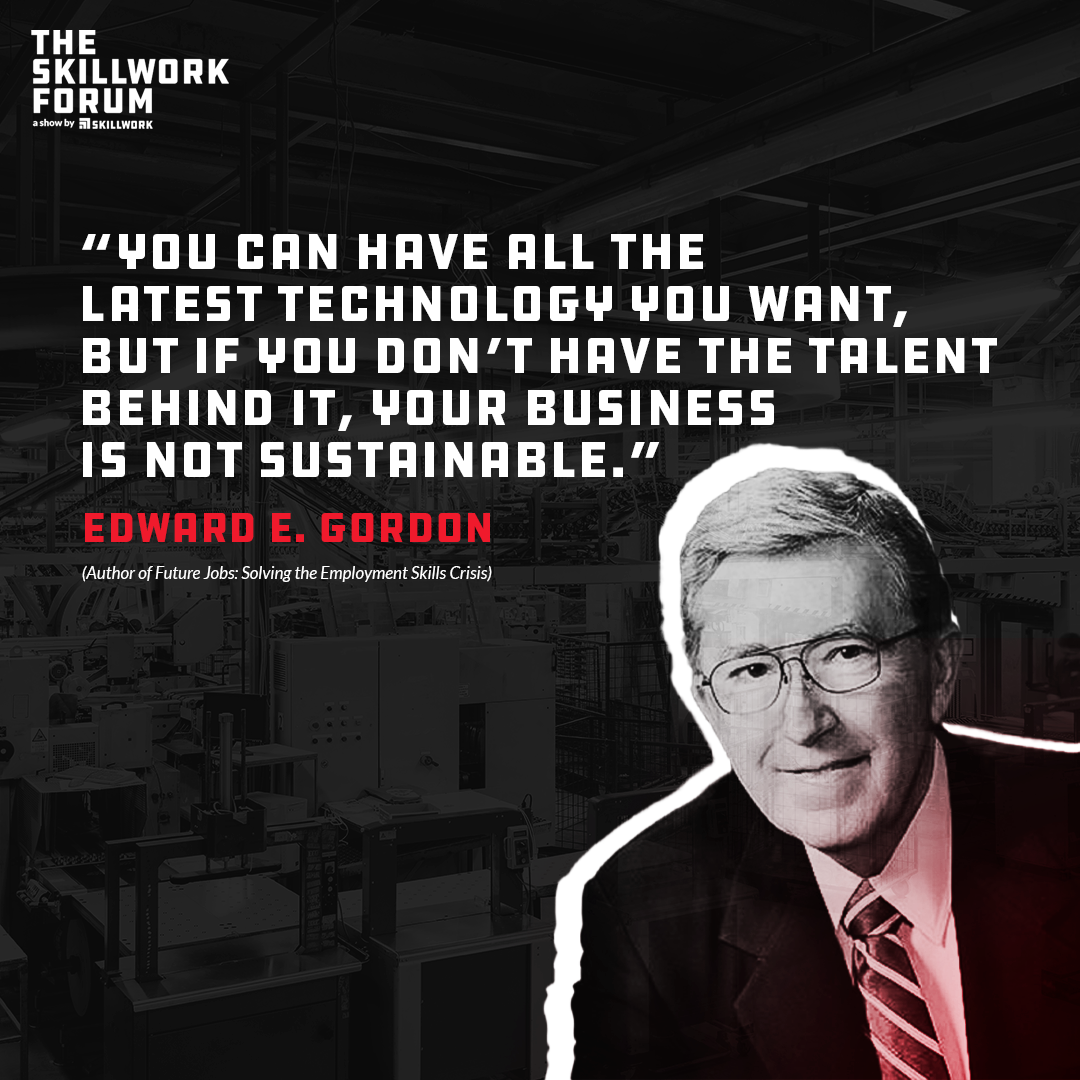
Unfortunately, lack of skilled talent is the number one reason (regardless of new equipment or not) why manufacturing plants:
- Miss deadlines
- Reduce production or output
- Have to turn away new clients or opportunities
- Lose revenue
When you take the leap into 4 IR and invest in its new innovations, you need skilled tradespeople who know and understand these interconnected systems.
But finding skilled workers was already hard enough before 4 IR. The Fourth Industrial Revolution has made finding the right employees even more difficult.
However, the Fourth Industrial Revolution is happening whether you want it to or not. So, what can you do to ensure that you’re at the forefront of it instead of lagging behind?
Leading Through the Fourth Industrial Revolution
Regardless of where you are in the 4 IR process, it’s never too late to start making some changes and getting ahead of the curve.
Here are four steps you can take to ensure that you’re leading through the Fourth Industrial Revolution.
1. Embrace 4 IR as the Reality
Right off the bat, you can embrace 4 IR as the reality.
Tim (co-founder of Skillwork) mentions in the podcast that just like previous Industrial Revolutions, there were always people who said things like, “That’s not going to last, that’s a fad” and “I’ve been doing things the same way for years, and I don’t need to change.”
Do you know what happened to them? They didn’t stay in business.
One of our best pieces of advice to any business owner in manufacturing is to embrace the Fourth Industrial Revolution and take it seriously.
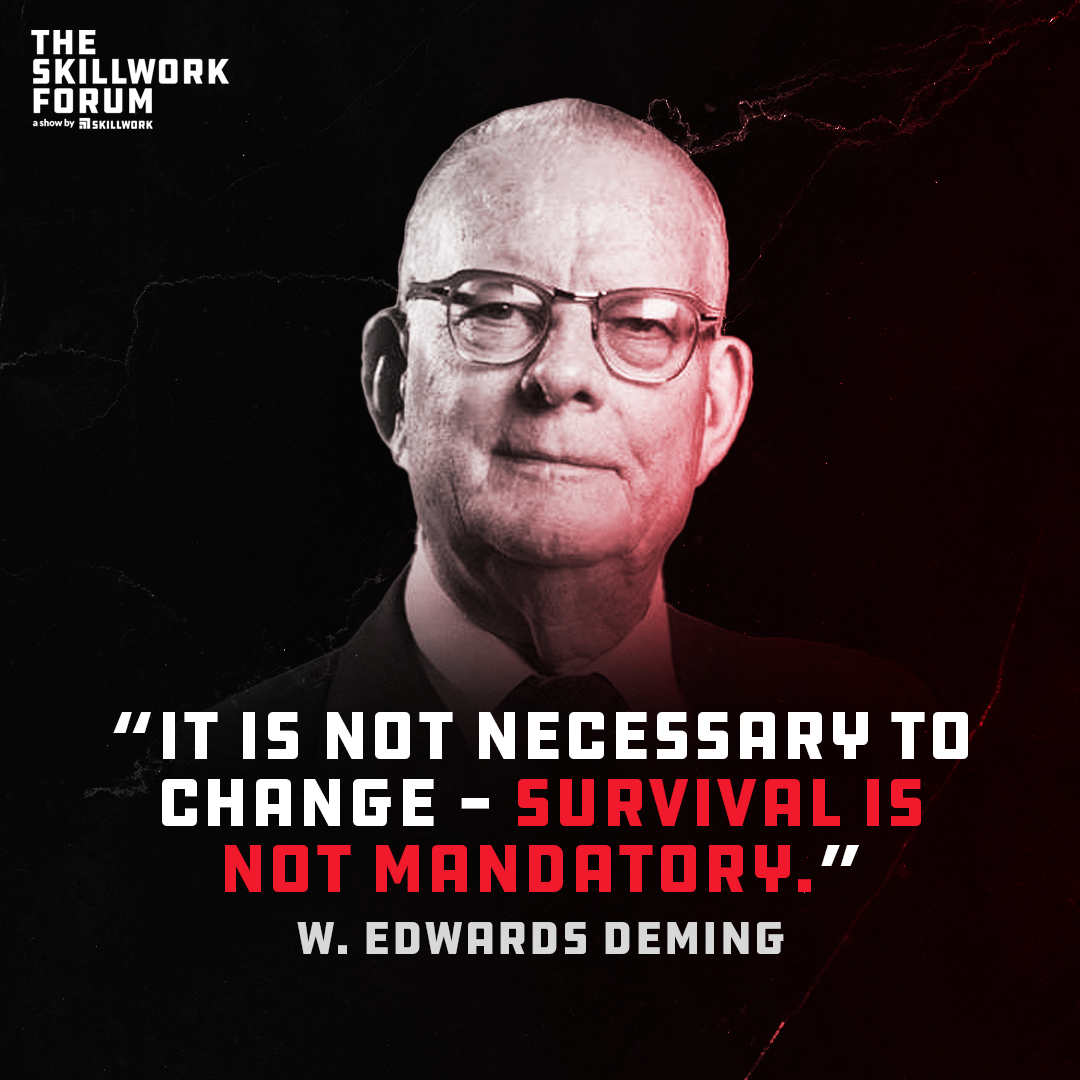
2. Invest in the New Technology
The real cost of downtime in manufacturing is significant, and we know that your goal is to:
- Reduce downtime in production
- Avoid unplanned downtime in manufacturing
Investing in the new technology of the Fourth Industrial Revolution can help you do that. Interconnecting your facility makes sense because it will help it run more efficiently and increase your revenue.
Yes, there’s the large upfront cost associated with purchasing new equipment, but the technology will provide you with valuable future growth opportunities.
3. Recognize the Skills Gap
Once you make the step to invest in the new technology, you need to recognize that there’s a skills gap (if you haven’t already).
With 10,000 baby boomers reaching retirement age every day and fewer young people going into the trades, there are lots of job vacancies. When you add in new technology that requires more specialized skills, the pool of qualified talent shrinks even further. There’s also the challenge of keeping younger workers around long-term, many of whom have a desire to switch jobs frequently.
The reality is that competition for skilled workers is fierce and the shortage isn’t going away any time soon, putting many employers in very difficult positions.
But recognizing that there’s a skills gap can help catalyze the process of finding a solution, which may require changing your hiring practices.
4. Adjust Your Hiring Process
The labor shortage has led many employers to believe the lie that, “There’s nobody out there that wants to work anymore. There’s no talent.”
Don’t buy into that.
Experienced, qualified workers are out there, you may just need to change and adjust your hiring practices a bit. Instead of sticking to the old ways of hiring, do research and brainstorm about innovative ways to find and hire employees.
For example, working with a staffing agency that specializes in skilled labor could help supplement your internal hiring process. The agency’s large pool of candidates and sole focus on finding you the right employee could expedite your ability to hire good employees.
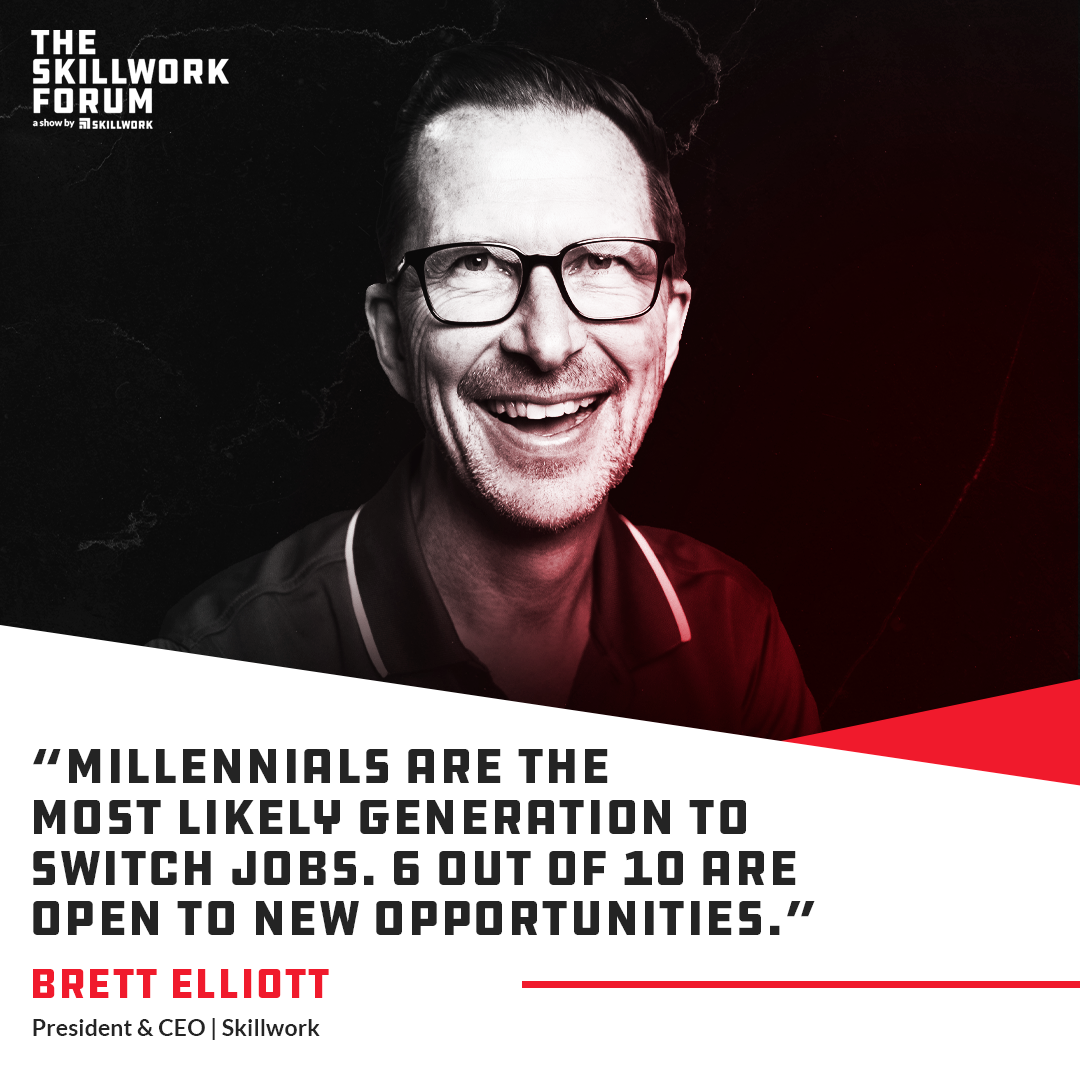
Find the Workers You Need, When You Need Them
The Fourth Industrial Revolution is the current reality in manufacturing. With it comes great growth opportunities but also some challenges, especially in regards to finding and hiring qualified workers.
However, the workers are out there that can help you thrive in the Fourth Industrial Revolution—and we can help.
We started Skillwork because we know:
- How valuable qualified workers are to manufacturers
- How difficult finding them can be
So, we introduced a travel staffing model that finds skilled workers from all over the country and places them into your open positions. We handle the initial vetting process to ensure that all the workers we send your way have the skills, knowledge, and experience to impact your workplace from the day they show up until the contract ends.
We don’t know when the conclusion of the Fourth Industrial Revolution will come or what the next revolution holds, but we do know that we can help you embrace 4 IR right now.
Contact us today to learn more about our travel staffing process and its benefits for your business.

